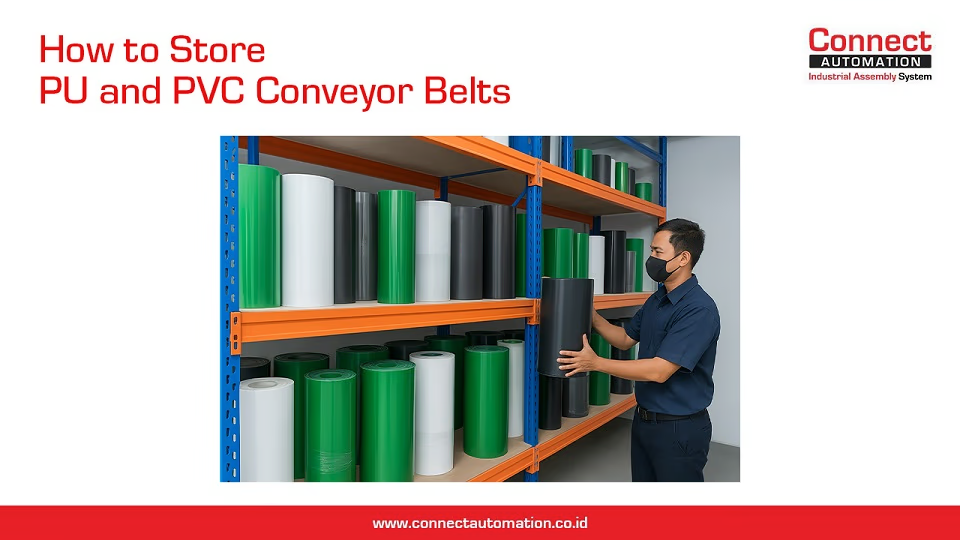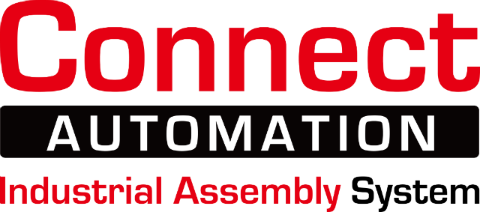REQUEST A FREE ESTIMATE!
How to Store PU and PVC Conveyor Belts

Storing PU (polyurethane) and PVC conveyor belts correctly is the easiest way to extend belt life, preserve splice quality, and avoid headaches at installation. Improper storage can introduce waves, flat spots, edge damage, or hydrolysis/oxidation that shorten service life. Below is a practical, shop-floor friendly playbook based on leading belt makers’ recommendations and international guidance.
Storage Room: Clean, Dry, Cool, and Dark
- Store belts in a clean, dry, well-ventilated room away from direct sunlight or UV exposure.
- Maintain temperature around 10–30 °C (short-term tolerance 5–35 °C) and relative humidity around 50–65% RH.
- Keep belts away from heat sources (ovens, steam pipes), welding areas, motors/switchgear (ozone/UV), and chemicals or solvents.
- Reason: UV and ozone accelerate polymer aging; excessive heat or humidity causes deformation, delamination, and tracking problems.
Packaging & Placement
- Keep the belt in its original packaging or opaque cover until installation preparation.
- Store rolls on pallets or racks, not directly on concrete floors; chock the rolls to prevent movement.
- If outdoor storage is unavoidable (not recommended), elevate the roll on pallets/racks and cover it with a UV-resistant tarp, ensuring ventilation to prevent trapped moisture.
Position & Stacking
- For PU/PVC belts, store rolls horizontally on supports that cover the full belt width.
- Narrow rolls can be stacked carefully with separators to distribute weight evenly and avoid imprinting.
- Do not place heavy objects on top of rolls; avoid sharp contact with belt edges.
- For long-term storage, rotate rolls periodically to prevent flat spots or wave set on the bottom side.
Main Enemies: UV, Ozone, Oils/Solvents, and Chemicals
- UV & Ozone: Keep belts away from welding areas and high-voltage electrical equipment.
- Oils/Solvents: Spills can cause swelling or softening of the cover and weaken the splice, especially on food-grade belts.
- Aggressive Chemicals: Store away from detergents, thinners, strong acids, and alkalis.
Temperature & Humidity — Practical Recommendations
- Ideal temperature: 10–30 °C; short-term tolerance: 5–35 °C.
- Relative humidity: 50–65% RH, avoid condensation.
- If the belt arrives from a very hot or cold location, acclimatize it for at least 24 hours in the installation area before splicing and tensioning.
Handling & Lifting
- Lift rolls through the core using a shaft/bar and slings or a spreader beam.
- Never spear the roll with forklift tines or clamp directly onto the belt fabric/cover.
- Use edge protectors when strapping and keep a clear area around rolls to avoid impact from pallets or forklifts.Use edge protectors when strapping and keep a clear area around rolls to avoid impact from pallets or forklifts.
PU vs PVC — Key Notes
- PU (Polyurethane): Highly resistant to abrasion and cutting, commonly used in food applications. Sensitive to excessive heat and aggressive solvents — keep conditions clean, dry, and free from UV/ozone.
- PVC (Polyvinyl Chloride): Versatile and economical, widely used in logistics and packaging. Still needs to be kept cool, dry, and away from sunlight and solvents; store in its original wrap.
Quick Do’s & Don’ts
- Do: Store at 10–30 °C in a dry, shaded room; keep in original packaging; place on pallets/racks; rotate rolls periodically; lift via core; keep away from UV, ozone, and chemicals.
- Don’t: Do not store directly on concrete; do not expose to sunlight; do not place heavy loads on rolls; do not insert forklift tines into rolls; do not store near heat sources.
PU and PVC belts are forgiving when stored right—and fussy when they’re not. A little discipline in environment, packaging, and handling prevents most tracking, splice, and hygiene issues later on. If you’re unsure about a specific compound (anti-static, flame retardant, hydrolysis-resistant PU, etc.), follow the maker’s data sheet for exact temperature and humidity limits.
Need help? Connect Automation can evaluate your site conditions (temperature, humidity, handling flow), set up a labeled storage rack system, and supply the right PU/PVC belt with the correct splice and tensioning for your application.
Connect Automation specializes in providing automation solutions, including conveyor systems, to improve efficiency across various industries. The company delivers cutting-edge technology to help organizations automate tasks and optimize workflows. Connect Automation helps businesses reduce manual efforts, boost productivity, and achieve better outcomes. With a customer-focused approach, the company designs tailored solutions to ensure smooth and effective automation transitions for long-term success.
Kawasan Industri Jababeka Tahap 1, Jl. Jababeka II D Blok C14L Cikarang, Indonesia (17530)
(021) 893 5060 Google Maps
Rungkut Industri III, No. 37, Rungkut Menanggal, Kec. Gn. Anyar Surabaya, Indonesia (60293)
(031) 9985 8624 Google Maps
